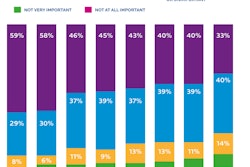
Retailers are already gearing up and bracing themselves for the holiday season. With the U.S. economy getting better and unemployment rates falling, retailers are perceiving strong consumerism through Black Friday, Cyber Monday and the month of December. Still, many Americans are accustomed to a lagging economy and refined their holiday spending habits.
During the holiday season, it is imperative for retailers to find the intersection of where supply meets demand and stock the appropriate products in the right quantities. But how do they prepare their inventory supply when the demand is mostly speculative? To avoid missing out on massive profits by understocking and conversely price slashing by overstocking, retailers need to use robust inventory management software.
Inventory management systems, which include forecasting and computer-assisted ordering software, are intended to streamline supply and replenishing functions. Entities use this software technology to cease the recurrence of avoidable errors by automating an entire inventory system. Mishandled inventory can bloat inventory costs associated with a dissonance between consumer demand and inventory. Hence, retailers understand the importance of complete inventory visibility.
Software providers have an opportunity to create viable software solutions for inventory management to gain a foothold on the market and earn significant returns. To do so, offering sturdy, fully customizable forecasting and replenishing software with value-added hardware integrations is paramount.
Inventory software should be offered modularly from an overall supply chain management (SCM) system. Modularizing complete SCM platforms helps retailers tailor a customized solution to manage their unique supply chain and logistics needs. Offering them through web-based cloud technologies creates ubiquitous technology solutions that retailers can leverage. The software-as-a-service (SaaS) infrastructure is standard for software offerings as it is easier for users to deploy, access and upgrade.
Forecasting is a valuable technique when dealing with inventory quantities. It involves a procurement strategy intended for optimizing inventory levels to meet demand at a given point in time. Making subjective, impulsive estimates can lead retailers left with erroneous inventory levels. This ranges from overstocking to understocking, which impedes the ability to maximize profits by increasing the cost of goods sold (COGS). Retailers use extensive business intelligence and forecasting software to aid them in making objective inventory decisions.
To provide retailers with a complete inventory management solution, software providers must interface an extensive forecasting module. Integrating analytics software with the point-of-sale (POS) system and then to the underlying inventory management platform is the most effective procedure to capture data. Using online analytical processing (OLAP) tools, all data of and relating to a sale can be extracted from the POS, structured into cubes and loaded into a server database to be stored. Creating the ability to customize the parameters for data mining and how it communicates to the inventory management system is key.
The most important tool in any analytics software is a query builder to simplify the creation of a project for data mining. It is best to provide a customizable list of all possible parameters retailers could leverage, and employ a drag-and-drop action so in-depth, relational analyses can be constructed with ease. This is where the specific retailer creates the custom analytics project, and selects which data it would like to be communicated to inventory management, forecasting and replenishing software. Companies can further the scope of the analytics software by offering intuitive mobile-based dashboards for senior management to easily sift through analytical data.
To enhance the automation in inventory functions, retailers utilize computer-assisted replenishing systems. Manual inventory is labor intensive and leaves room for human miscalculations. Automated replenishing systems generate purchase orders off of real-time and historical data to trim labor costs and improve order accuracy. Knowing what and when to stock relieves inventory carrying costs and damages, plus increases profit margins.
When programing automated replenishing software, the module needs to integrate consistently with current and historical sales data. Customization of the system should be geared toward offering multiple purchasing rules. Furthermore, when a rule is triggered, the system must be able to alert management using SMS messaging modules when an item falls to minimum stocking levels. Using cumulative sales data, the software systematically produces economic order quantities (EOQ) of units a retailer should add to inventory.
Developing a proper electronic data interchange (EDI) module facilitates efficient communication between retailers, warehouses, suppliers, shippers/freighters and manufacturers. EDI standards ensure the interoperability of data and documents with other entities in the supply chain. It also provides the ability to receive advanced shipment notifications (ASN) in real time to obtain all relevant shipping characteristics. The EDI module must include the capabilities to generate, transmit, translate and parse EDI syntax. Harmonize with contemporary inventory control hardware, including radio frequency identification (RFID), barcodes and quick response (QR) code devices, to promote greater accuracy and faster processing.
Automated inventory for retailers is crucial to their bottom line at the time of the year in which consumerism peaks. When dealing with stock, retailers need to accurately account for optimal levels. Overstocking leads to discounted products, while underestimating inventory precipitates a loss of potential profits and a decreased customer experience. Providing entities with a robust, intuitive and customizable software solution to inventory management can gain big profits for a software provider looking to penetrate or increase market share.

















